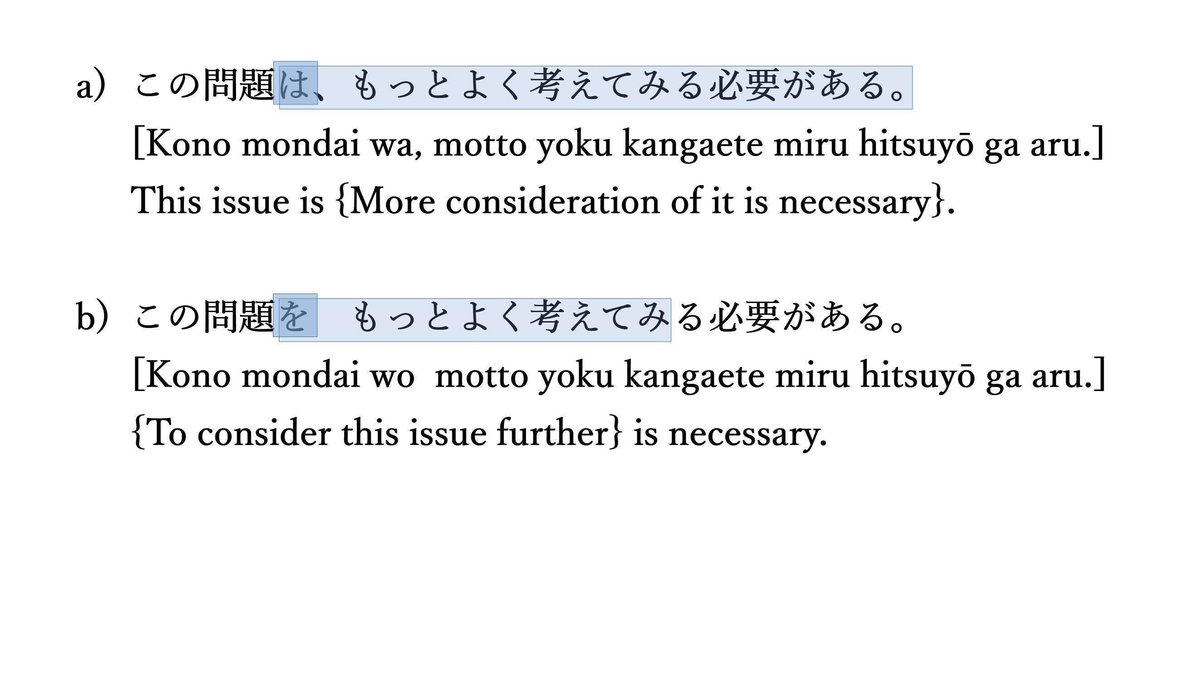
On Language
I consider linguistic events an embodiment of duality, in which I find a pair of two elements orthogonal to each other. Nothing appears without something else complementary to it. A set of such appearances includes subsets which are ordered in the relation of independence and non-independence: the whole and the part.
Something is either syntactic or non-syntactic. Something else orthogonal to it is either syntactic or non-syntactic. Therefore,
[S◦S] With the original syntactic series of events and another, a commutative dialogue takes place.

[S◦N] With the original syntactic series of events and an union (*) of multiple syntactical series of events, a monologue takes place. The Japanese binding particle "ha (wa)" allows for conversation as if it goes in monologue.


In (a) above, the binding particle “wa (は)” makes no semantic connection between the self-questioning and the self-answering, while, in (b), the case particle "wo (を)" functions so that it forms a specific semantic connection (V + O).
(*) A union of such two series constitute one non-syntactic dimension, a plane in a geometrical sense.

[N◦N] The intersection of two non-syntactic dimensions, that is, a syntactic synthesis of non-syntactics. What takes place here is the extension of [S◦S].

Thus, language is an exemplification of semiosis, where the signifier and the signified replace each other, or commutable: ¬¬M = M


According to Edmund Husserl's clarification of the structure of judgment, I consider what is called syntax as the self-recursion of temporality. Temporality constitutes itself as temporality. However, there is something in the way of this process aiming at a pure fractal structure: an object, which is the origin of two-folded process of predication. The predication process goes hand in hand:
a) with the initial object, sunk and potentialized on the horizon of the past, emptied in representation, then fulfilled
b) with a certain meaning - which is a completed coincidence of a multiplicity of projections - as a coincidence of coincidences,
constituting an intensified contrast on contrasts, with meaning intervening between (syntactic) lines.

この記事が気に入ったらサポートをしてみませんか?
